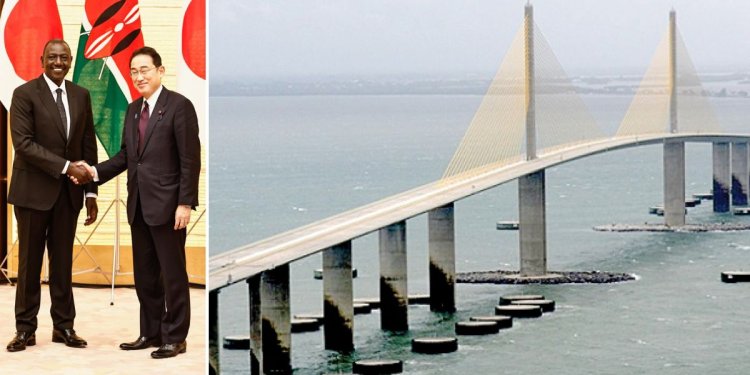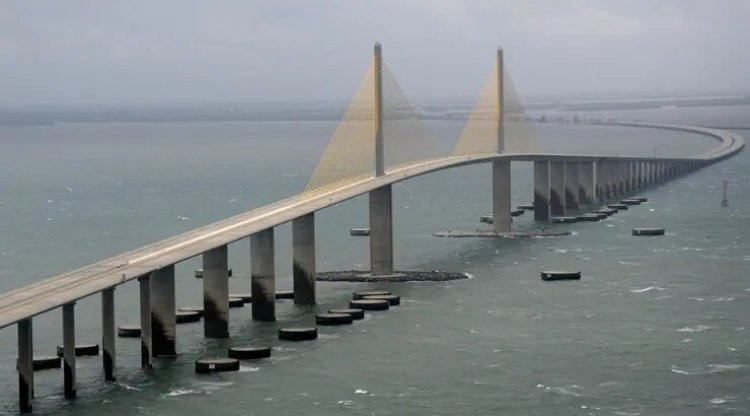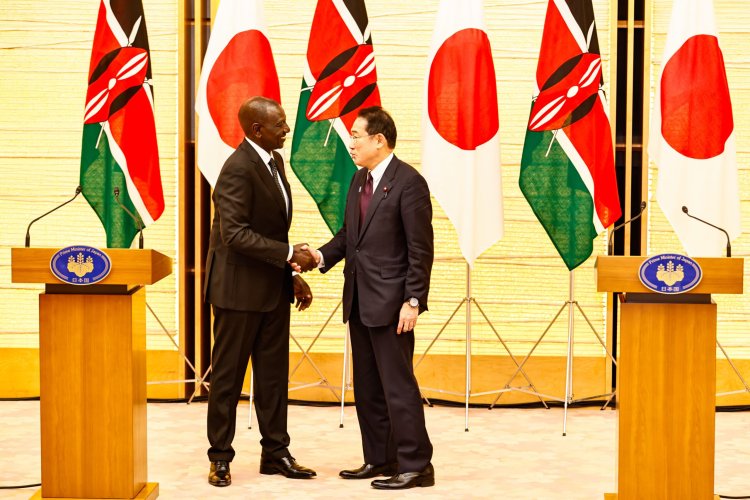Ruto Bags Ksh260 Billion From Japan To Complete Africa's Longest Bridge
The largest projects to benefit from the billion-shilling deal are the Dongo Kundu Infrastructure Ecosystem and the Mombasa Gateway Bridge at the Coast at Ksh260 billion.

Kenya's dream of securing bragging rights for the longest bridge on the African continent could soon become a reality after President William Ruto secured billions that will go towards its completion.
According to State House in a press statement on Thursday, February 8, financial agreements worth Ksh350 billion have been signed during President Ruto’s visit to Japan, agreements which will support projects and programmes in sectors that are aimed at turning around the economic fortunes of the country.
The largest projects to benefit from the billion-shilling deal are the Dongo Kundu Infrastructure Ecosystem and the Mombasa Gateway Bridge at the Coast at Ksh260 billion.
Mombasa Gateway Bridge Features
Estimated to cost Ksh85 billion, the 1.4km Mombasa Gateway Bridge, will connect Mombasa Island with South Coast, providing an alternative means of transport to the 84-year-old ferry service that suffers perennial breakdowns that delays traffic flow to and from Mombasa to the South Coast.

The Mombasa Gateway Bridge is set to be the longest in Africa. /CONSTRUCTION KENYA
According to the Mombasa Gate Bridge City Masterplan, the project was to begin in June 2021 with a completion date of June 2024 when the bridge would be put to use.
However, this did not happen as the stakeholders were unable to resolve compensation and resettlement issues that continue to hold back the project.
The funding comes a month after Transport Cabinet Secretary Kipchumba Murkomen met Japanese officials at the second Kenya-Japan Quality Infrastructure Conference in Nairobi to discuss the construction of the bridge.
At the time, the CS boasted that the bridge which has been under construction since its feasibility study was done in 2019. Part of the delays were caused by the need to compensate a total of 1,706 households that were displaced from 725 plots amounting to 62.6 hectares of land.
"Japan is also involved in new major projects such as the Mombasa Gateway Bridge, which will be the longest in Africa," Murkomen stated at the time, adding "It will not only ease the movement of people and goods between the island and the South Coast but will also be a tourist attraction."
Design
The Mombasa Gate Bridge design calls for the erection of a cable-stayed bridge that will support four traffic lanes, soaring 69 metres high at the mid-point to allow ample space for ships to pass underneath on their way into and out of the Kilindini harbour.

 admin
admin 





